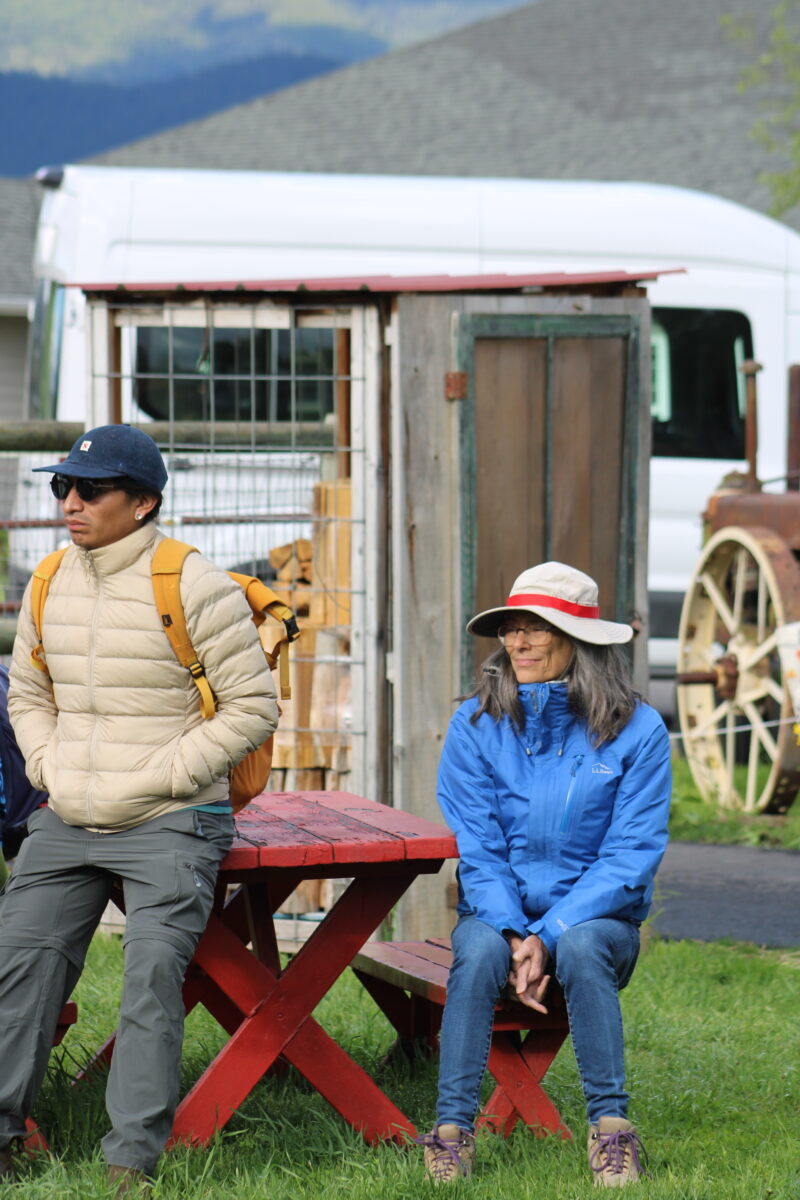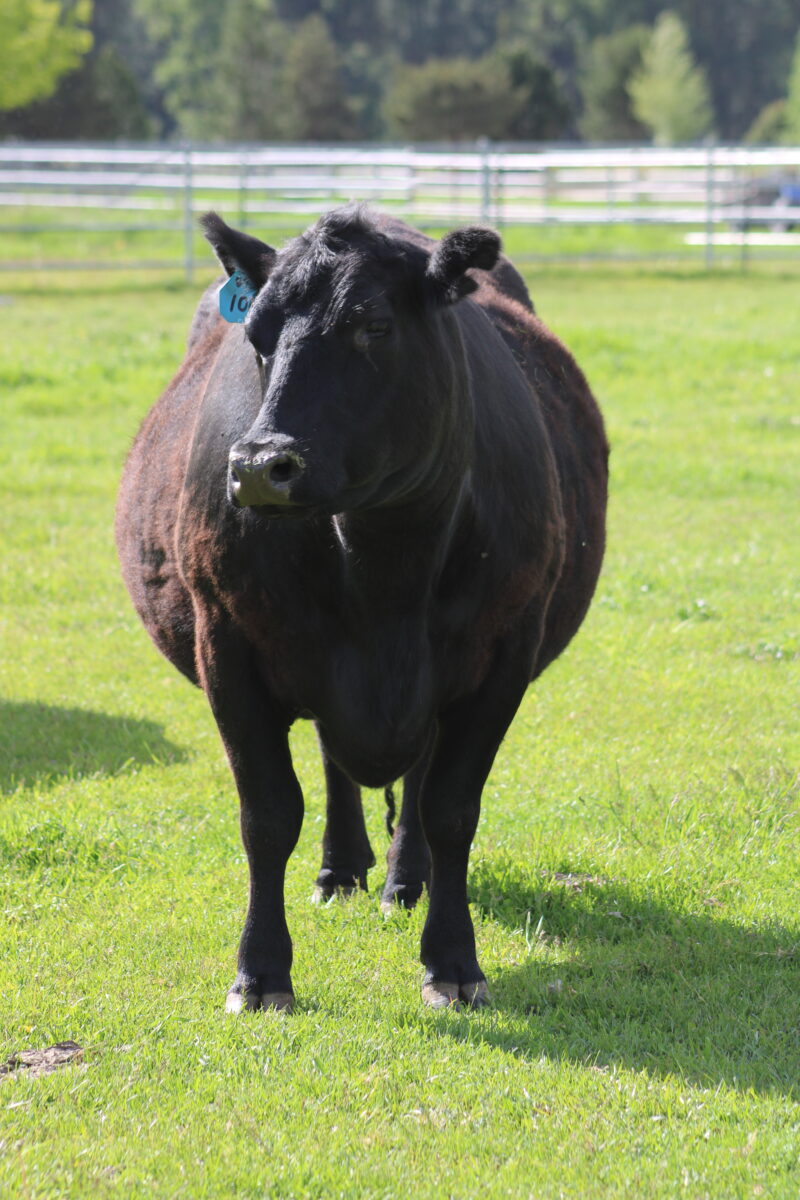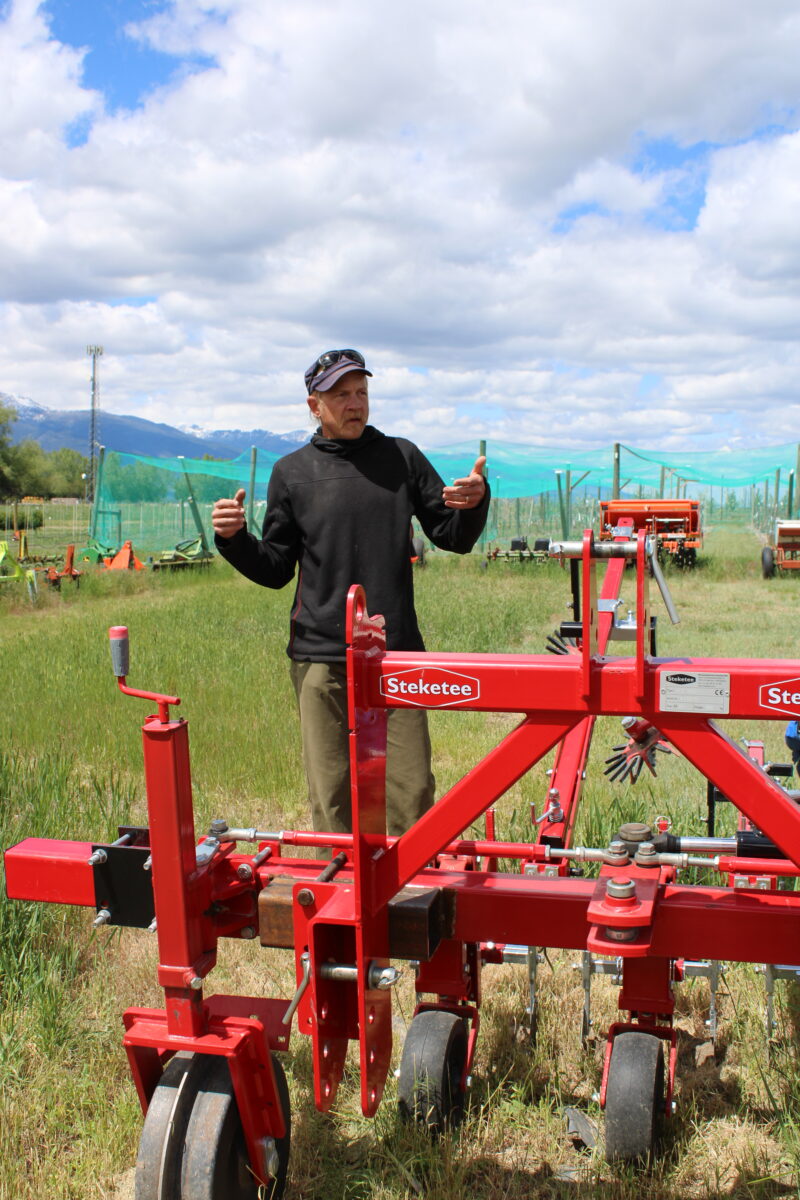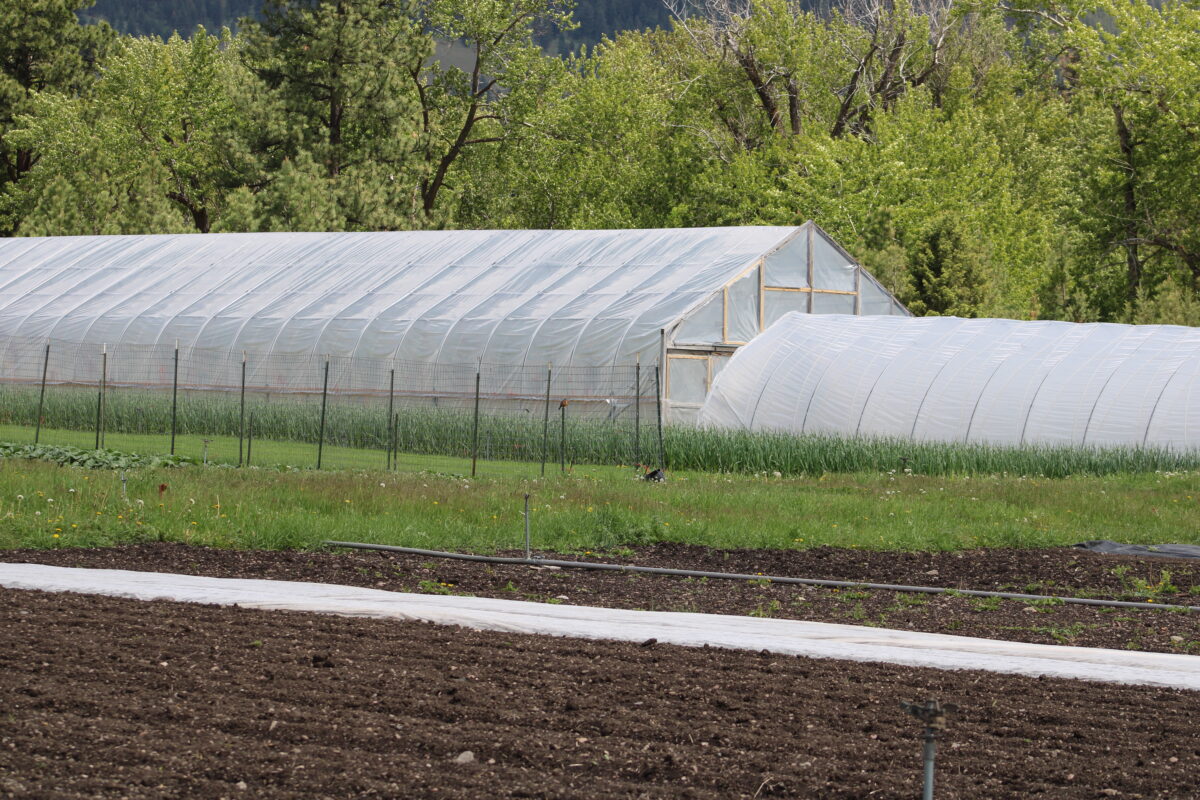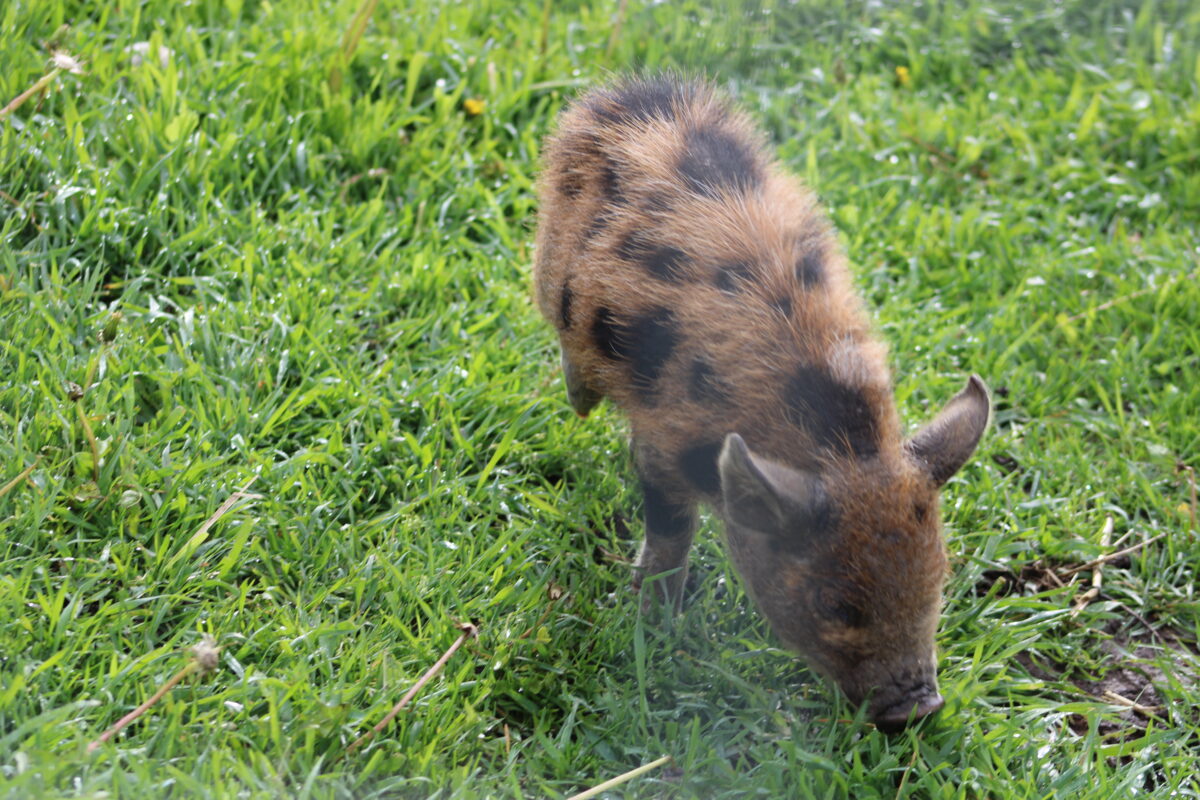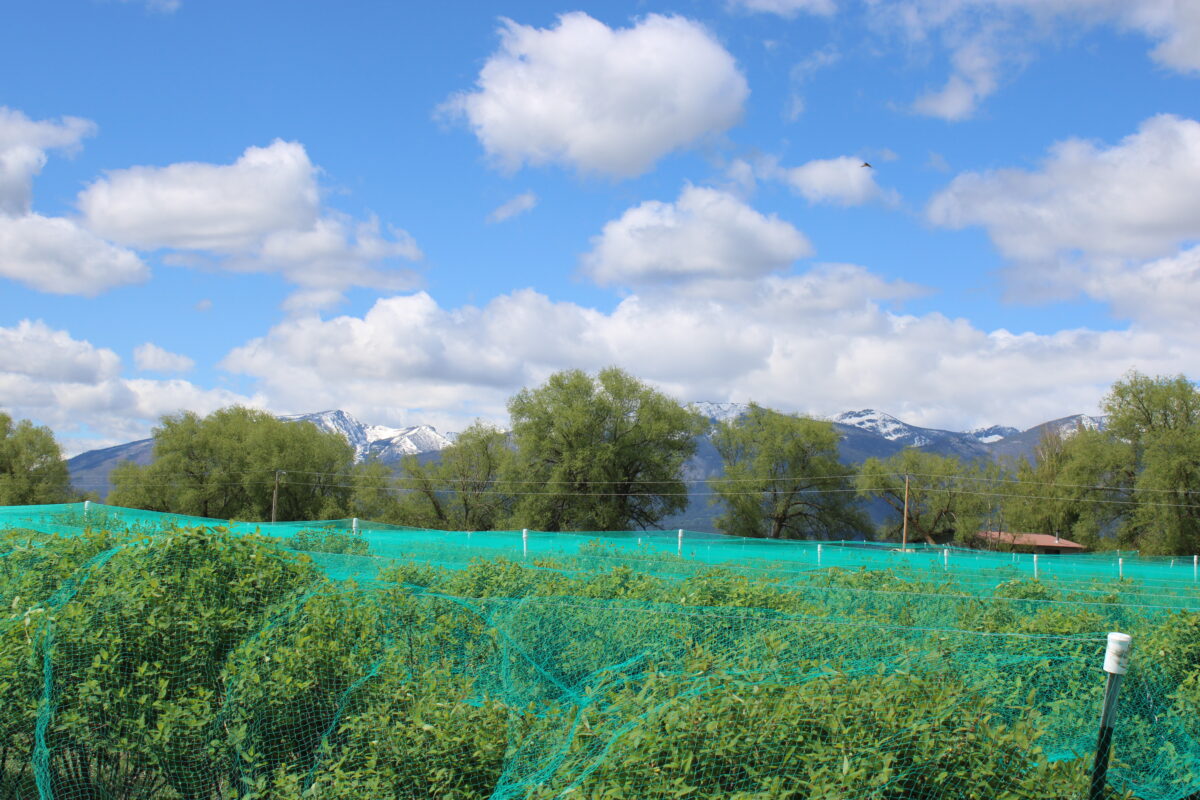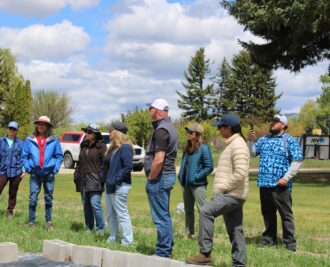The SARE Fellows trip to Montana was amazing. I enjoyed seeing the collaborative efforts among the various farms and organizations to share their knowledge, expertise, and resources to help each other thrive while meeting the needs of the community. This experience has shown me how people working together is what truly makes programs sustainable. – Daniel Helsham, SARE Fellow
Four SARE Fellows, representing each region, gathered in Missoula and the Bitterroot Valley Montana for their biannual meeting and education tours. Through their visits at seven farms, ranches, research station, and community organizations, the Fellows furthered their knowledge and skills about innovative sustainable practices; the introduction and marketing of new crops; collaboration between farmers, researchers, and extension; multi-generational operations; strengthening local food systems and meeting community needs; and challenges with an urban-ag interface.
Before heading out to the field, Fellows learned about Montana agriculture in general and Missoula County specifically. They learned that Missoula County has 576 farms, with a median farm size of 20 acres. The farm tours were put together with this context and aligned with Montana priorities of innovation at both the small- and large-scale, maintaining small communities, and developing opportunities to create resilient agriculture systems, jobs, families, and working lands.
Stops in the day and a half tour included:
- Garden City Harvest and PEAS Farm
- Grass Valley Farms
- Mangan Ranch
- Turner Family Farms
- Aspen Grove Farm
- Western Agriculture Research Center- MSU Research Farm
- Willow Mountain Vineyard
Feeding the Community
The SARE Fellows tour was a wonderful opportunity to see what sustainable farming looks like in a completely different part of the country. While the particulars of irrigation or distribution in dry and vast Montana are pretty different from the hills and hollers of southeast Ohio, the same principles apply -- farming in a way that regenerates natural resources and increases production and profitability. – Molly Sowash, SARE Fellow
Garden City Harvest and Peas Farm
Starting as a grassroots project in the 1990s when the government made changes and cuts to food assistance programs, Garden City Harvest has now grown into a critical community asset with the Peas Farm (Program in Ecological Agriculture & Society), a Community Supported Agriculture (CSA) program, community gardens, and a farm to school program. These programs provide sustainably grown food to the community, many of whom live in poverty.
Farm Director Dave Victor claims, “The secret sauce of our organization is the long list of partnerships. We aren’t doing this work in a vacuum. We are all relying on each other, so resiliency is built in. We listen to what the community needs and adjust as needed.”
Peas Farm is now 10-acres and part of a unique partnership with the University of Montana. Students come out from the University as part of a curriculum to learn about sustainable agriculture. Peas Farm is just one of four farms run by Garden City Harvest.
The organization provides 400 community garden plots at 10 sites and includes compost, water, garden tools, and more so that people can grow their own food. Executive Director Jean Zosel is proud of their work “connecting people with each other and meeting people where they are – for example, low-cost produce at mobile farmstands in senior areas.”
Turner Family Farms
Jon and Erin Turner felt a calling to save agriculture land near Missoula and raise their children on a farm. They now farm at the end of a cul-de-sac, with two of three adult sons staying on the farm. Turner Family Farms raise cattle, sheep, pigs, and pastured-raised chicken and eggs. They grow flowers and produce in a hoop house and in the fields. The Turners have an honor system farmstand and host multiple community events on the farm.
Son Logan says, “it was awesome growing up on a farm in the middle of town, this led to my passion for agriculture.” His brother Ethan states, “it’s rewarding teaching kids about farming and where food comes from, so close to town. The kids get a feel for the agriculture lifestyle.” The youngest brother Gus, who is going into aviation, says this career started with the hard skills learned on the farm. “We have to use equipment very effectively to make income on a small farm.”
Mangan Ranch
Dick and Barbara Mangan started farming in the mid-1970s and started Mangan Ranch outside Missoula in 1989, raising Angus bulls and heifers. Their son Patrick returned to the farm to help his dad, while also working as an MSU extension educator. As part of the generational transition, Patrick has added a flock of sheep, a fruit orchard, and goats. The farm now provides the local community grassfed lamb, goat meat, beef, apples, cherries, and plums - sold online and in their farmstand. All livestock is raised on-site or on a ranch down the road. The Fellows had the opportunity to enjoy an on-farm dinner of grilled Mangan lamb and vegetables from local farms.
New Crops and Technologies
It was a wonderful experience hosting the SARE Fellows program western Montana. There was a great synergy of thoughts and experiences when the group came together from all of our different parts of the nation and led to some great conversations with producers and around the dinner table at night as we all shared ideas and thoughts. - Patrick Mangan, MSU Extension Educator & host
Aspen Grove Farm
Melissa Allred calls herself the “crazy berry lady” and in short time, she has become a leader in the honeyberry industry. Starting in 2018, she bought 5,000 plants while in a beginning farmers business class. The honeyberry is a new crop in the area, and to make the income she needed to support her family, she knew she had to go big right from the start. She grows four cultivars, planted in every other row. She uses no sprays and uses nets to protect the berries from the birds. She has experimented with a shake harvester which allows these berries to stay fresh longer. Much of her farming success comes from strong partnerships with the MSU Western Agriculture Research Center.
As one of the first commercial honeyberry growers, she is building an industry with her research and marketing diversification. Aspen Grove Farm has a U-Pick, farmstand, and farmers market presence. She sells the berries to a local winery and makes jams, sauces, and syrups. Melissa, along with local growers and Extension Educator Patrick Mangan started the Montana Berry Growers Association to obtain resources and provide educational opportunities. Melissa has been successful at grantwriting and says, “being part of a new, small part of Montana agriculture, it’s important to collaborate, learn about funding, and access research.” The farm has 25 employees, many of whom are women escaping domestic abuse.
Grass Valley Farms
Cory Miller has had a long-time interest in biology, chemistry, and specifically fungi. With his 1,000 acres, he’s “big into regenerative practices, but bills also have to be paid.” His practices and trials focus on increasing soil health. To make the operation profitable, he has diversified into regeneratively grown Kentucky Bluegrass sod and hay; agritourism and pheasant hunting (which provides needed winter income); and a cow-calf operation with some value-added products such as jerky. He plans to sell non-GMO chicken feed as well. The cattle all use state-of-the-art GPS collars and tracking software (virtual fencing).
Cory’s interest in fungi led him to a strong understanding of the importance of fungi for soil health. He has embarked on research on creating fungally-rich compost using ingredients from his farm combined with the latest technologies. In a research project with nine other farms, Grass Valley Farms had the highest amount of soil organic matter. One difference is that he uses his dry compost instead of applying extracts, a common practice. Ingredients he uses include chopped cotton tree wood, alfalfa meal, horse manure, and he adds spent grains from a local brewery, molasses, and fish. The compost sits unturned for a year in a built Johnson Su Bioreactor, with air flowing through a chimney. Later he adds worms and rumen.
Willow Mountain Vineyard
It is important to Roxann and Brian McGuire to enhance the growth, direction, and development of Montana’s statewide vineyard and winery industry. To do so, they make their wines by hand and have carefully researched sourcing the best winegrapes to grow in their climate. They specialize in growing cold-hardy winegrape cultivars, which create acidic, light-body wine. They bought an old press from a Lodi California winery which allows them to press lightly, as these winegrapes need. Brian states, “We are tripling wine production this year, due to our increased winegrape yields.”
Farmer-Educator Interactions
I enjoyed learning how extension agents interact with their clientele. I am very interested in learning about different ways of interacting with and helping producers, what type of collaboration extension establishes, and how they transfer and translate scientific knowledge to the producers. – Romina Gazis-Seregina, SARE Fellow
Melissa Allred credits Dr. Zach Miller and Kierstin Schmitt at the MSU Western Agriculture Research Center (WARC) for much of her success with honeyberries. They have supported her enthusiasm and creativity with research, advice, and creative ideas. Melissa and Zach work together closely on a regular basis, helping ensure Melissa’s success.
She is not the only farmer in the region to benefit from WARC’s research. WARC is the only center in the area focused on specialty crops and they serve ag communities throughout Montana, as well as Idaho and Wyoming. The Fellows were impressed by WARC’s research on weed management for vegetable growers; economic benefit of purchasing tools such as precision cultivars; and specific honeyberry and apple trials. The weed management project has six partner farms who provide WARC with their results. WARC staff are also breeding tomatoes and peppers that can grow in Montana’s short season and cold nights. The region’s small-scale farmers, who make up most farms in the area, utilize WARC’s information and partnership on varieties, growing practices, and profitability.
The tours were organized and guided by Patrick Mangan, MSU Extension Educator and Western SARE State Coordinator. The Fellows meet next in Vermont.
